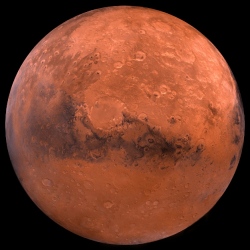
Work is proceeding quickly on China’s planned mission to land a rover on Mars by 2020, the chief administrator of China’s space program said Friday. Formally announced in January, China’s Mars voyage will attempt to recreate the success of the U.S. Viking 1 mission that landed a rover on the planet four decades ago.
"What we would like to do is to orbit Mars, make a landing, and rove around for reconnaissance in one mission, which is quite a challenge," China National Space Administration head Xu Dazhe said at a rare news conference. "This is a project that has attracted much attention from both the science and space fields."
Xu said China will further explore civilian uses of space technology in areas such as navigation, remote sensing and communications, and will seek international collaborations.
Since conducting its first crewed mission on a Chinese-built Shenzhou spacecraft in 2003, China has launched an experimental space station called the Tiangong 1, staged a spacewalk and landed its Yutu rover on the moon.
This year, it plans to launch components for a larger, permanent Tiangong 2 space station sometime after the beginning of June, as well as the Shenzhou 11 spaceship with two astronauts on board who are scheduled to dock with the station and live in it for several days. Administrators suggest a manned landing on the Moon may also be in the program’s future.
A source of enormous national pride, China’s military-backed space program plans a total of 20 space missions this year at a time when the U.S. and other countries’ programs are seeking new roles.
China is also developing the Long March 5 heavier-lift rocket needed to launch the Tiangong 2 and other massive payloads.
